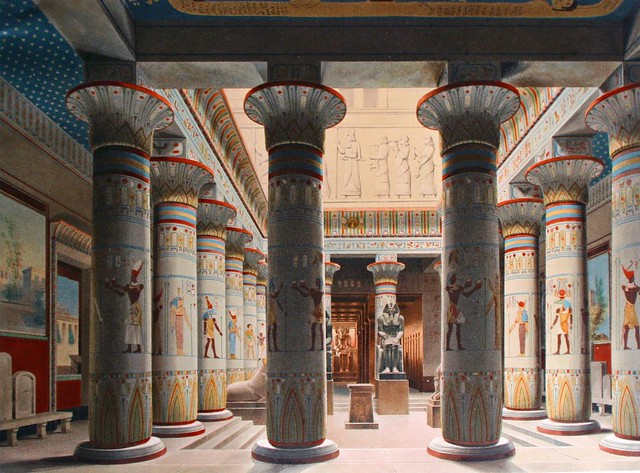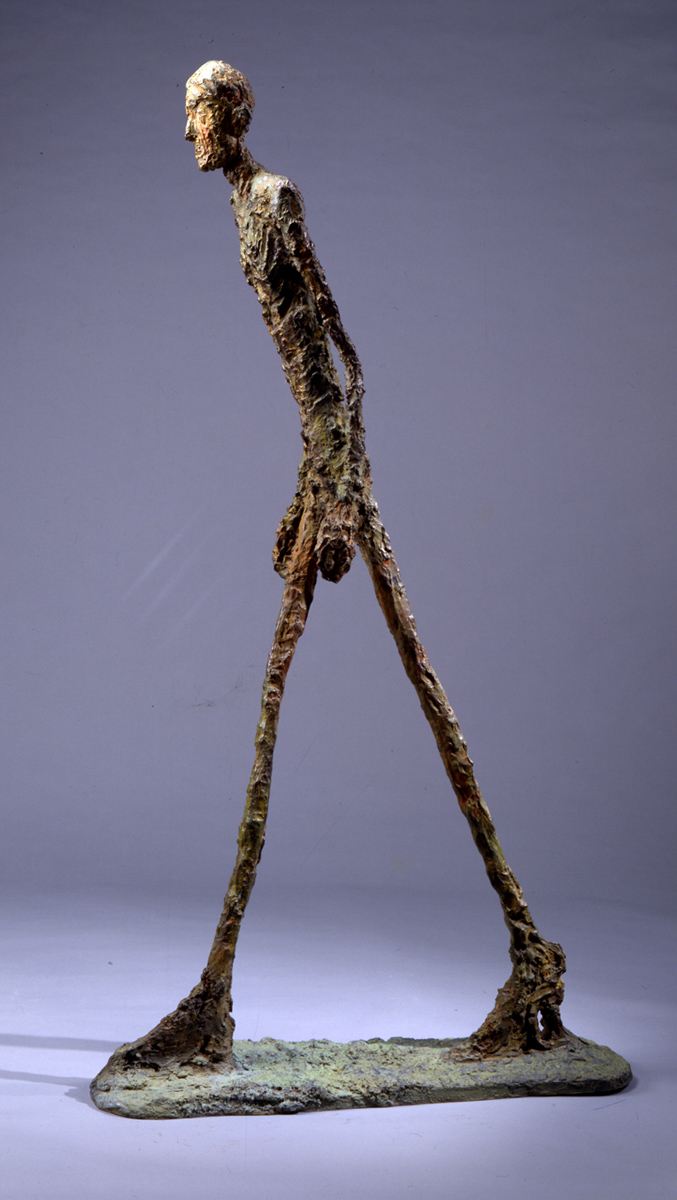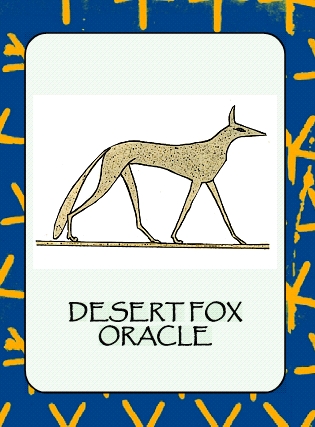(Inspired by lecture of Prof Dietrich Wildung – retired director of Berlin Ägyptische Museum )
Many a museum across the world is currently in the final stages of major re-installation. Here at Oxford’s Ashmolean museum the Egyptological display was finished just last year. The new clear lines are a startling contrast to the old installation. Part of the new museum philosophy seems to be “less is more” and I for one do sometimes find myself missing the old mahogany cabinets packed with treasures, for instance the collection of small amulets collected by Petrie and displayed by type in a way very convenient if one is looking for ones favorite.
Professor Deitrich Wildung’s recent lecture in oxford (19.4.13) goes some way to explain the logic behind the current museum reformation. He took us back 600 years in Europe to first reception of Egypt in our culture. The famous mosaic of Hermes Trismegistos in the Duomo (Cathedral) of Sienna cites Egypt as the font of all wisdom but really this is Egypt mediated by the culture of the Roman Empire and thence Greece. It would be another 200 years before European travelers journeyed to Egypt and made direct contact, and later still until the Egyptian language was deciphered by Champollion (in 1822). Too late, contends professor Wildung, for Egypt to take its proper place as one of the pillars of classicism. Thus the art of Egypt was downgraded and represented either as Egyptomania, Orientalism, the “slightly ridiculous” and the post Napoleonic Kitch.
The Berlin Museum of “all arts” originally excluded Egypt from its collections, the omission was only later corrected by the building of a special extension. Professor Wildung cites the old layout of the Neues Museum in Berlin (above) as a revealing example of Egyptianizing kitsch. I have to say that to me this is reminiscent of the colorful rooms at Madinet Habu – a temple described in some detail in Napoleon’s Description de l’Egypt. It’s a wonderful place but it does remind us that even original Egyptian art can also be kitsch. It’s a trend that continues well into the 20th century long after modern art should have done its job of refreshing our vision. So for example the architect of the Rosicrucian Society HQ retains a very unreconstructed view of Egyptian culture.
Reconstructed view Medinet Habu, SW corner, first courtyard, from 1930s Epigraphic Survey(1)
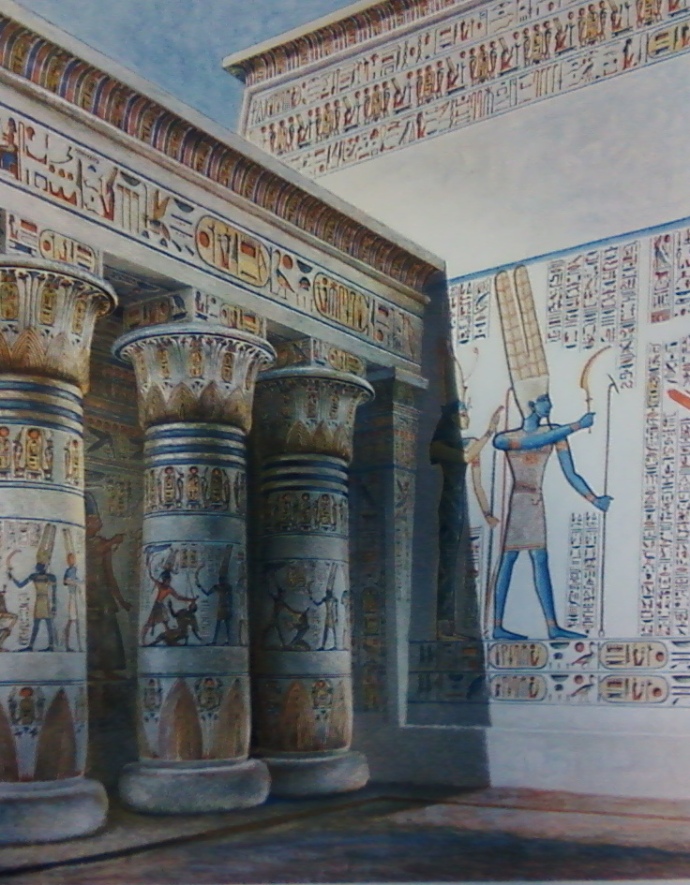
Reconstructed view of “Memnonium” now known as The Ramesseum, from Description de l’Egypt, circa 1800 (2)
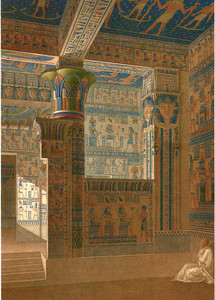
Modern photographic of interior at Medinet Habu
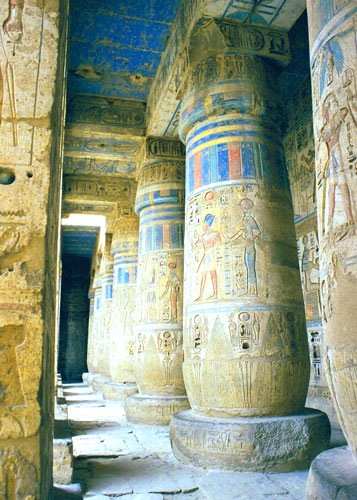
Ironically in modern art, Egypt was at first excluded from the influential idea of “primitivism” because it was viewed as too classical! But this situation gradually changed as a number of our most important modern artists began to see the light. Francis Bacon apparently eschewed a career as Sculptor because the Ancient Egyptians has done it all in that medium.
Professor Wildung contends that neither will mere copying of Egyptian forms be the right approach, he gives many examples of this failed approach. What one is looking for is original art inspired by Egyptian forms or even using some of the same principle and conventions of representation but in a new way. For this one needs to look at Cubism, starting with Picasso, where an Egyptian influence seems likely but is, according to the learned professor, impossible to prove. On the other hand the artist Paul Klee studied Egyptian art in the Louvre even travelling to Qurna, on the Theban West bank to make his own studies.
The most influential influence on modern museum display of Egyptian art comes from an unexpected source – Alberto Giacometti. It turns out he was obsessed with Egyptian sculptural forms, studying them in museums and can help us rediscover the correct framing of Egyptian art. So for example Giacometi’s pieces often sit on a block base. The block base is no accident. It was also used by ancient Egyptian sculptures to give often quite small pieces a very monumental form.
Here are some photographs of the new display at the Berlin Museum, which maybe don’t show it at its best although one can certainly see the rather striking tall cabinets on block bases with just one exhibit per case:
It all reminds me that history is always viewed through the lens of the present. So for example many Platonic dialogues could not be fully understood until their time had come in our culture; when we shared some of the same interests. Same goes for Sanskrit poetry, whose first translations never really caught on, they were done in that high Victorian style (lots of spume) but still haven’t really made it into the modern world. Perhaps now revisit the Ashmolean and see if it works for you.
———
Citations
(1) Uvo Hölscher, 1930, The Temple of Ramses III at Medinet Habu, Chicago, Vol II. Those monumental Egyptological publications are impressive in form and content; the care and scholarship demonstrated in the numerous detailed maps and archaeological drawings is a wonder to behold.
(2) Description de l’Égypt, 1988 facsimili of original edition 1809 – [Description de L’Égypt ou Recueil des observations et des recherches qui ont étè faite en egypt pendant l’expedition de l’armie Francais. Publie par les ordres de sa majeste L’empereur Napoleon Le Grand.]
öÄ
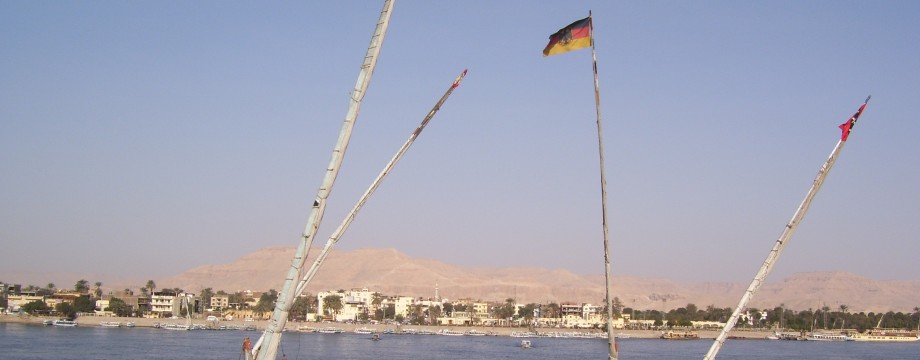
![[ All Art has been contemporary ]](https://i0.wp.com/farm4.staticflickr.com/3578/3357034756_02f2a2593f_z.jpg)
